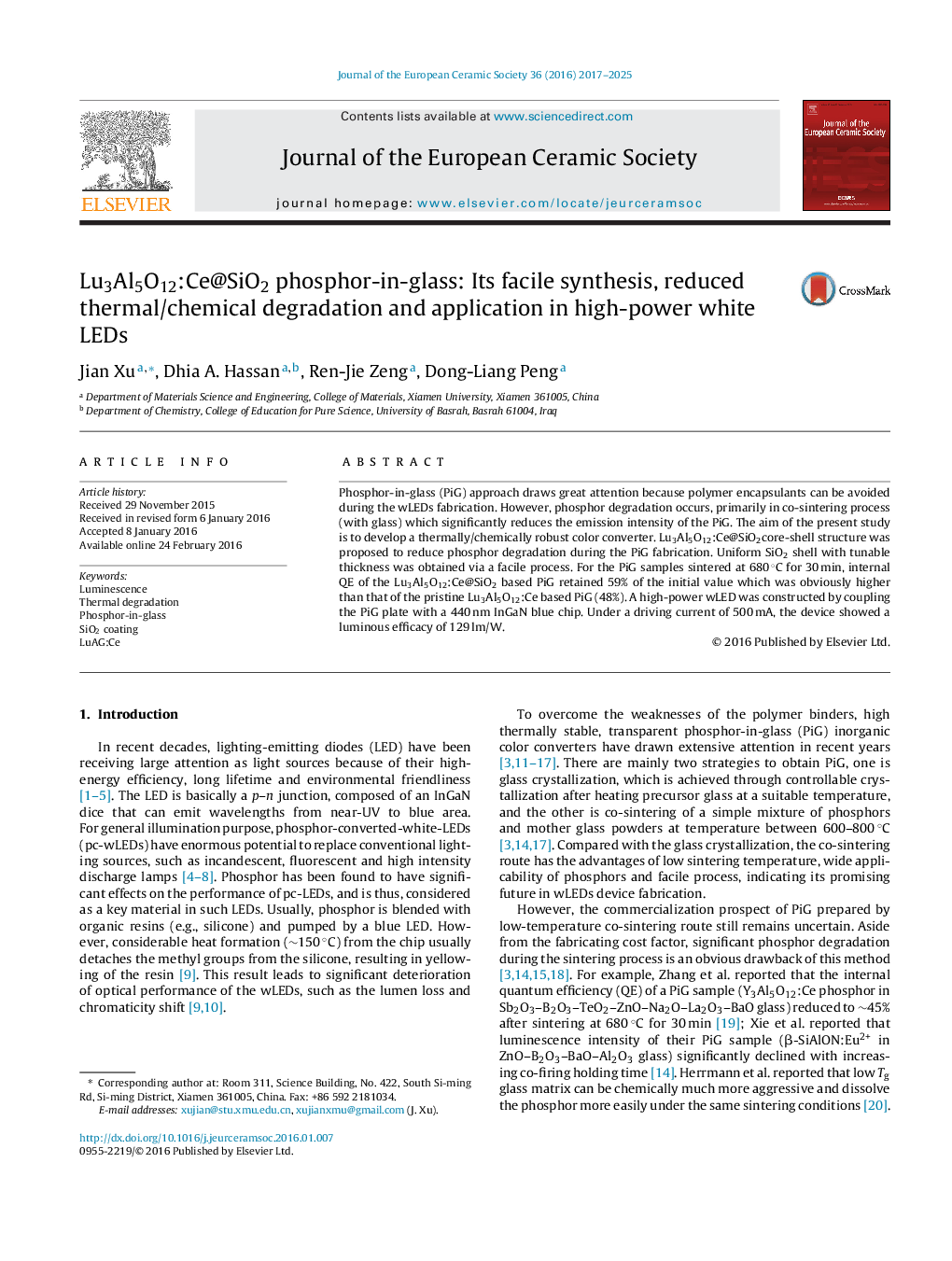| کد مقاله | کد نشریه | سال انتشار | مقاله انگلیسی | نسخه تمام متن |
|---|---|---|---|---|
| 1473627 | 991052 | 2017 | 9 صفحه PDF | دانلود رایگان |
Phosphor-in-glass (PiG) approach draws great attention because polymer encapsulants can be avoided during the wLEDs fabrication. However, phosphor degradation occurs, primarily in co-sintering process (with glass) which significantly reduces the emission intensity of the PiG. The aim of the present study is to develop a thermally/chemically robust color converter. Lu3Al5O12:Ce@SiO2core-shell structure was proposed to reduce phosphor degradation during the PiG fabrication. Uniform SiO2 shell with tunable thickness was obtained via a facile process. For the PiG samples sintered at 680 °C for 30 min, internal QE of the Lu3Al5O12:Ce@SiO2 based PiG retained 59% of the initial value which was obviously higher than that of the pristine Lu3Al5O12:Ce based PiG (48%). A high-power wLED was constructed by coupling the PiG plate with a 440 nm InGaN blue chip. Under a driving current of 500 mA, the device showed a luminous efficacy of 129 lm/W.
Journal: Journal of the European Ceramic Society - Volume 36, Issue 8, July 2016, Pages 2017–2025
